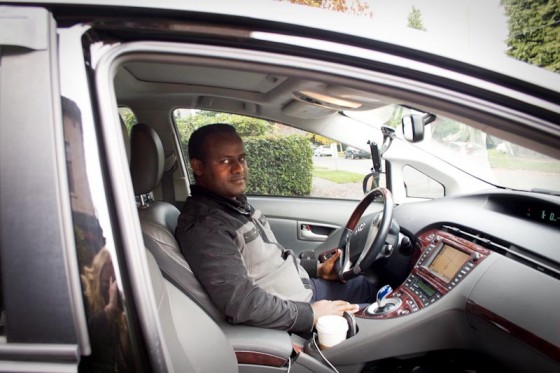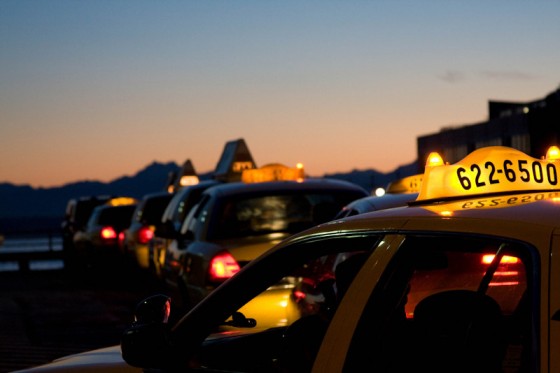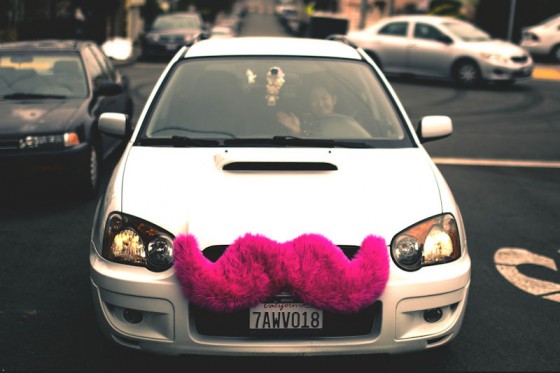Has the explosion of new ride-share services in Seattle hurt immigrant taxi operators? It depends on who they’re driving for.
“This isn’t about a fun way to use you iPhone to locate an ice cream truck; it’s about real individuals who fought their way out of refugee camps to have an opportunity to make a better life.”
That was Dawn Gearhart, spokeswoman for the Western Washington Taxicab Operators Association, at a September 26 Seattle City Council committee meeting to discuss taxi and for-hire regulations.
Gearhart argued that immigrants, who make up the majority of Seattle taxi drivers, are suffering at the expense of increasingly popular ride-share programs like UBER, Sidecar and Lyft, which are threatening the taxi industry.
Taxi drivers have called for tougher regulations, claiming ride-share programs are both illegal and unfair to those paying city fees. Ride-share promoters respond that their goal was to create an easier, safer service for drivers and riders.
In a recent petition sponsored by uberX, more than 12,700 people voiced their support for the ride-share program in Seattle. Just a few months earlier, approximately 20 taxi drivers rallied outside Seattle City Hall with a petition of 500 signatures calling for tougher regulation of the ride-share programs.
The subtext of the debate has been that ride-share services are allowing young middle-class people who own cars to supplement their incomes by undercutting hard working immigrants who drive taxis for a living.
But at the series of City Council committee meetings that ended in September it became increasingly obvious that the two sides had one thing in common — the majority of drivers on both sides were immigrants.
“The vast majority of the drivers that we partner with are immigrants,” said Brook Steger, UBER’s Seattle general manager. “Seattle has a very rich Ethiopian immigrant population and we partner with a lot of those drivers… We’re a huge supporter of the Ethiopian community here and the immigrant population, so I definitely don’t feel like we’re hurting that population at all.”
UBER came to Seattle in 2011 and has since expanded to three separate ride-share services — uberX, UberBlack, and UberSUV. While UberBlack and UberSUV are similar to hiring a private chauffer, the most recent addition to the program, uberX, substitutes the luxury for a less expensive, faster ride.
With the taxi business suffering, many immigrants are turning to programs like as UBER for jobs.
Andualem Bahru, who also drives a bus for King County Metro, said the flexibility UBER offered was the main reason he switched to the company last April.
 Andualem Bahru began driving for UBER this past April after driving a Yellow Cab for six years. (Photo by Jillian Stampher)
Andualem Bahru began driving for UBER this past April after driving a Yellow Cab for six years. (Photo by Jillian Stampher)
Bahru came to the United States in 2005 from Ethiopia. During his first three months in Seattle, he spent every day at the library teaching himself English. From there he was able to get a job as a janitor. In 2007 he began working as a taxi driver for Yellow Cab.
“I think I made more money driving a cab, but there’s a lot of things I count — like driving my own car [and] making my own schedule — as worth money,” he said.
As a former Yellow Cab driver and a current metro driver, Bahru has all the licenses Seattle requires for for-hire drivers. The city doesn’t currently require ride-share drivers to have these licenses, something the city council is considering changing by implementing tougher regulations.
“Everybody should be operating on the same playing field,” said Leonard Smith, director of organizing and strategic campaigns at Teamsters Local 117, the union that represents taxi drivers. “There are a lot of differences that put the taxis at a competitive disadvantage.”
Seattle isn’t the only city where ride-share programs are challenging the taxi industry. In major cities across the United States, companies such as Lyft, Sidecar, and UBER are facing backlash from licensed drivers and the cities that support them.
Most notably, in June 2013, Los Angeles sent a cease-and-desist letter to ride-share programs, demanding they stop operating without a license. The letter had little effect because the programs had state authorization, but it did start the debate in California. Similarly, taxi unions in New York City; Washington, D.C. and San Francisco have resisted the uprising of cheaper cars-for-hire.
Services like UBER are able to charge lower rates because they aren’t regulated by the city and don’t have the same expenses. Additionally, licensed taxi drivers are required to charge a minimum rate that is often higher than that charged by ride-share programs.
 Is the sun setting on traditional taxis in Seattle? (Photo by Amancay Maahs via Flickr)
Is the sun setting on traditional taxis in Seattle? (Photo by Amancay Maahs via Flickr)
Because he uses his own car, Bahru doesn’t have to pay the weekly rate to lease a taxi. This was another selling point for him.
“It’s a bit more peaceful driving for UBER,” Bahru said. “I don’t pay any money for anybody. If I make $100 then that’s my money so I can go home and rest. [With Yellow Cab], I have to make $580 per week just to pay the lease. That’s without the gas. Per week I have to make that money before I am making money for myself, so it’s stressful.”
Nowadays, competition magnifies this stress. Most taxi drivers, Smith said, view the competition as unfair since ride-share programs have the advantage of lower prices to attract customers.
“If I’m not allowed to compete on price and I’m not a businessman, then I’m in a dead spot,” Smith said. “Everybody working within this industry needs to have the same set of regulations.”
At the Sept. 26 council meeting, 20-year taxi veteran Jagit Singh said unlicensed ride-share programs hurt drivers like himself. He claimed it’s unfair for such programs to pay drivers who don’t have to pay the same dues as licensed taxis.
“Where can the cab driver go now?” Singh asked the council. “We are struggling, drivers and owners… How can we afford these cars the city of Seattle told us we need, plus insurance?”
One solution that seems to be widely accepted by both sides of the debate is increased licensing of ride-share programs. Both Bahru and Steger said UBER agrees with the city on the need for increased safety and that licensing drivers could help with this goal.
The last time the Seattle City Council discussed the issue was back on Sept. 26. Since then, Smith said talks are continuing behind closed doors. On December 13, the council is scheduled to revisit the talks about further regulations for ride-share programs.



No one cried when the immigrants came in and undercut American taxi drivers. So who’s crying about scab labor now?
http://bit.ly/cheapdrivers